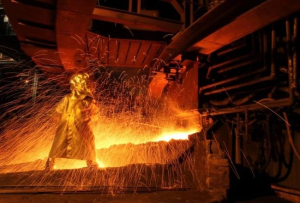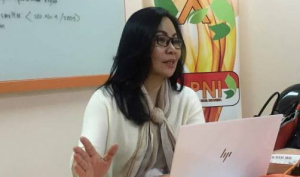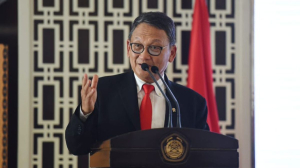Nickel miners support integrated information system SIMBARA
Secretary General of the Indonesia Nickel Mining Association (APNI), Meidy Katrin, said her association supports the development of Simbara, the information system of mineral and coal resources.
"We, from APNI, encourage Simbara to be issued considering the complicated nickel condition and trading. For example, in the case of [State-owned miner] Antam, there is a case of Antam block was mined by using other document," Meidy said on Monday, July 22, 2024.
SIMBARA is a digital platform developed to manage and monitor mineral and coal resources in Indonesia in an integrated way. The platform is managed by ministries and institutions.
By integrating nickel and tin commodities into the system, the government is attempting to improve data transparency and accuracy as well as to ensure compliance to existing regulation. This effort will not only benefit mining companies, but also the wider community and the national economy.
Meidy cited that when a mining permit holder secures work plan and budget, the location of their mine, the number of stock pile, and their production figures can be detected.
"For example, I produce 10 thousands ton, but only 5 thousands tons were sold. The amount produced is still owned by the State and does not belong to the company. The company only has the rights to do production activities. We have to report it,"
she said.
Through Simbara, the government can monitor the production and sale, because this information system initiative is a synergy of five ministries. An an example, the
transportation ministry has Inaportnet portal that allocates ports for special terminal purposes but used for all. As a company, a nickel mining company should use and rent public terminal if the company does not have a port to transport its product.
"In real practice on the field, it oftentimes happens that the special terminal is used as public terminal. Under the new system, such practices can be prevented," Meidy said.
Besides, she added, the presence of Simbara in nickel industry will balance the number of supply and demand to prevent oversupply. For example, this year, based on the data of APNI, smelters needs 280 million tons of nickel ores. However, the real need is 210 million tons because the smelters need buffer stocks.
"In this context, the Energy and Mineral Resources Ministry, the Transportation Ministry and the Industry Ministry have been integrated on the need of smelters and the production amount of miners. So, we expect that there will be no more oversupply," she said.
“Basically, the government can use SIMBARA to control nickel industry from upstream to downstream, and its supply chain from mining exploration to production, barging, sale and smelter. How many ores that have been refined by smelters, and their output," she added.
Meidy expressed hope that SIMBARA can be properly implemented well in remote areas so mining operations in those remote areas can report their acitivities in detail and factual.
Already have an account? Sign In
-
Start reading
Freemium
-
Monthly Subscription
30% OFF$26.03
$37.19/MonthCancel anytime
This offer is open to all new subscribers!
Subscribe now -
Yearly Subscription
33% OFF$228.13
$340.5/YearCancel anytime
This offer is open to all new subscribers!
Subscribe now





